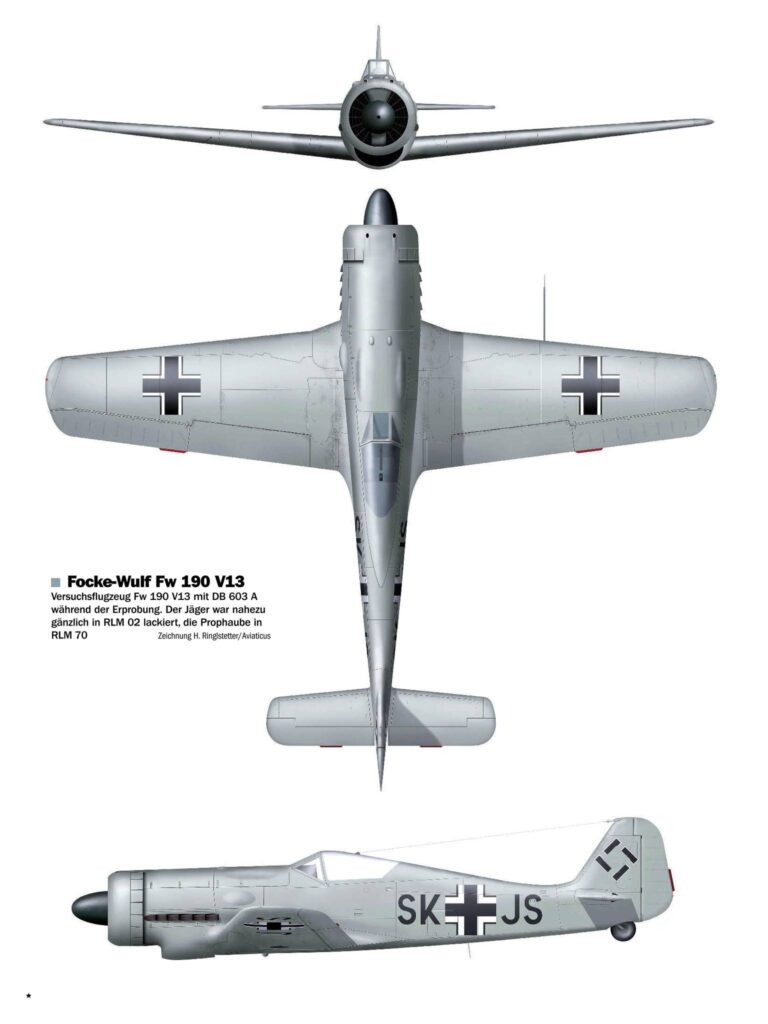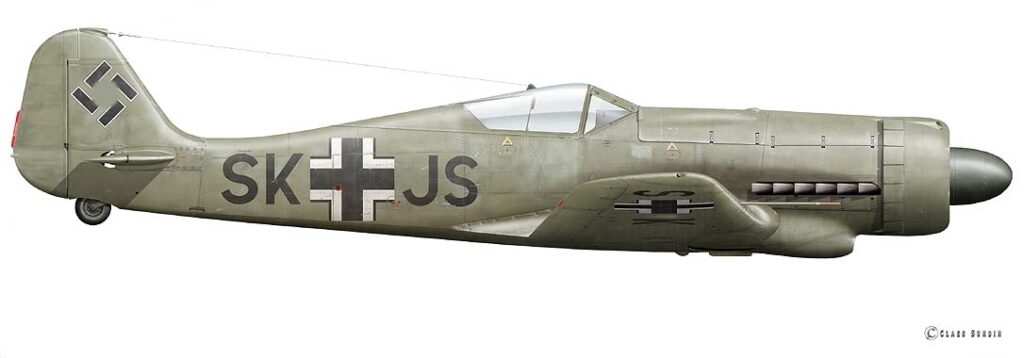
Focke Wulf Fw 190 V13 by Claes Sundin 2023
Black SK+JS. W.Nr. 0036, flown by Hans Sander, Cottbus/Germany, mid April 1942
A Focke Wulf document from 23 March 1942 confirmed that the improved versions of the Fw 190 would be powered by an inline engine, either by the Jumo 213 or the DB 603 engine. Three of the seven prototypes, the V13, V14 and V15 would be powered by the Daimler-Benz DB 603.
One of the DB prototypes the V13, was intended as the new Fw 190 C day fighter and was tested without any armament, although there were already firing channels in the ring radiator.
In order to make the aerodynamics of the machines particularly efficient, Focke Wulf decided to provide the V13 with the turbocharger air for the engine not through a hood on the side of the fuselage, as with the Bf 109, but within the engine cowling. However, this solution was not satisfactory in the flight tests because it impaired the altitude performance too much and the oil cooler also had too little space and was therefore not big enough could be designed.

The performance achieved during testing showed significant improvements compared to the radial engine variants of the Fw 190, especially at higher altitudes. On 9 April 9 1942, the V13 reached a speed of 500 km/h at an altitude of 500 m. On April 18, the same machine reached a speed of 650 km/h at combat performance at an altitude of 5950 m. A little later, this was improved to 663 km/h on the 13th flight by chief test pilot Hans Sander.
When the machine was transferred to Rechlin for technical testing at the end of April 1942, it became apparent that the flight characteristics of the V13 hardly differed from those of the radial engine versions of the Fw 190.
The longer fuselage simply resulted in larger slide angles when the rudder was not used correctly, due to less stability around the vertical axis. The visibility conditions on the landing approach were no worse than the radial engine versions due to the higher descent speed and the associated steeper approach angle of the V13.
Finally on July 30, 1942, on its 35th flight, the V13 was so badly damaged after an engine failure during the following emergency landing that the machine was abandoned. Further flight testing thereafter took place with the V15 prototype.
